As I read and travelled more, I began to love history, a subject I hardly liked in school. Indian history, I discovered, is told so much through its architecture, each structure narrating a story of its own.
 And when one starts taking an interest in Indian history, it is of little surprise if one comes across Badami – Pattadakal-Aihole circuit. For here is one of the labs, if you can call it that, of early Jain and Hindu temple architecture. It still remains a key to understanding Indian temple architecture and, by the same reason, Indian Hindu architecture, since most pre-Islamic architecture in India was dedicated to gods. It is amazing to note that Indians built ageless, everlasting architecture for the Eternal, while of the buildings for worldly affairs, there is hardly any footprint. More on that later.
And when one starts taking an interest in Indian history, it is of little surprise if one comes across Badami – Pattadakal-Aihole circuit. For here is one of the labs, if you can call it that, of early Jain and Hindu temple architecture. It still remains a key to understanding Indian temple architecture and, by the same reason, Indian Hindu architecture, since most pre-Islamic architecture in India was dedicated to gods. It is amazing to note that Indians built ageless, everlasting architecture for the Eternal, while of the buildings for worldly affairs, there is hardly any footprint. More on that later.
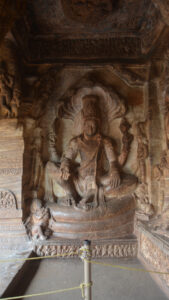 So, it was imperative that I visited the cradle of Hindu architecture. The thought was as interesting as it was exciting. To visit ancient places is also to visit ancient people since each place retains traces of those who built and lived there, giving us clues to understand them and, in return, understand ourselves.
So, it was imperative that I visited the cradle of Hindu architecture. The thought was as interesting as it was exciting. To visit ancient places is also to visit ancient people since each place retains traces of those who built and lived there, giving us clues to understand them and, in return, understand ourselves.
Badami sits at the foothills of a red sandstone outcrop near Agastya Lake and can be easily reached by train and road. It was the capital of the Badami Chalukyas from the 6th to 8th centuries A.D., with more known rulers like Pulakeshin II, who patronized the art and architecture of the time and made this place and the surrounding region, which includes Aihole, Pattadakal, and Mahakuta, a school of Jain and Hindu temple architecture.
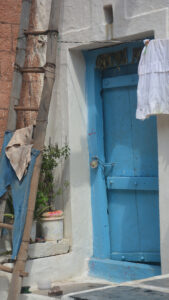 As we arrived at Badami Railway Station, quite a distance from the town, a sense of peace descended upon us. The journey from the station to the town itself was calming, transitioning us from the initial excitement to a serene anticipation of what lay ahead. The old settlement in the town is near the base of the hill. We started feeling the connection with the old as we navigated the lanes to reach the caves. The town, like any other small, quaint Indian town—lazy, quiet, messy, and self-absorbed—only revealed its ancient connections as we began climbing towards the caves.
As we arrived at Badami Railway Station, quite a distance from the town, a sense of peace descended upon us. The journey from the station to the town itself was calming, transitioning us from the initial excitement to a serene anticipation of what lay ahead. The old settlement in the town is near the base of the hill. We started feeling the connection with the old as we navigated the lanes to reach the caves. The town, like any other small, quaint Indian town—lazy, quiet, messy, and self-absorbed—only revealed its ancient connections as we began climbing towards the caves.
We soon reached the level of the caves .The view of the lake and the town from above was mesmerizing. So were the four caves, intricately carved and dedicated to Shiva, Vishnu, and Jain Tirthankaras. We were guided by a knowledgeable local guide who made the visit both delightful and meaningful. The guide helped us understand and appreciate the carvings and their significance. We learned to identify the deities carved in the rock by their symbols: Shiva with a trishul, Vishnu with the conch, chakra, and gada. And other deities with their vehicles, weapons, and flowers they carried. These new revelations made us more curious about our own culture and its symbolism.
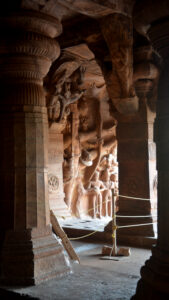 The incoming light touched the carvings very lightly, creating a meditative space even at peak afternoon hours. The caves themselves were quiet sanctuaries where one can connect with the divine and the self.
The incoming light touched the carvings very lightly, creating a meditative space even at peak afternoon hours. The caves themselves were quiet sanctuaries where one can connect with the divine and the self.
We moved from one brilliantly carved cave to another, learning and getting delighted along the way. Soon the bottom of the hill invited us with the brilliant sun shining on its still waters. The view across the lake was equally alluring with the hill and fort above it. Most enticing was the seemingly small, ancient temple sitting on the quiet edge of the lake— Bhutnath Temple.
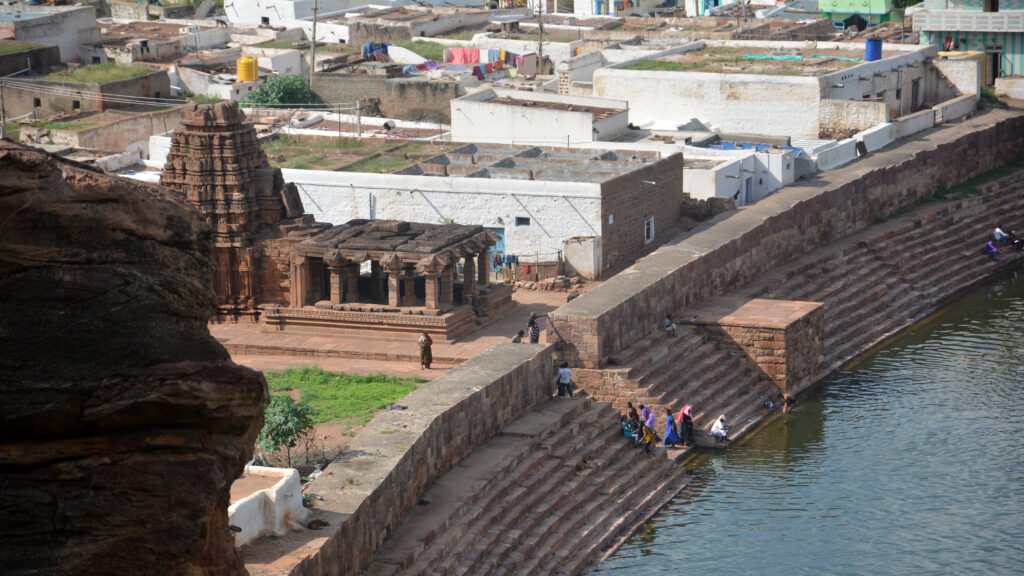 While climbing down from the hill and starting towards the temple, circumventing the lake, we moved through the old settlement. The settlement turned out to be a real surprise with its beautiful lanes, whitewashed houses, and lazy, cozy verandas. The scale, connection, and simplicity of the place were enchanting. The ghats, temples along it , ancient trees, and houses all added to the charm of the small town.
While climbing down from the hill and starting towards the temple, circumventing the lake, we moved through the old settlement. The settlement turned out to be a real surprise with its beautiful lanes, whitewashed houses, and lazy, cozy verandas. The scale, connection, and simplicity of the place were enchanting. The ghats, temples along it , ancient trees, and houses all added to the charm of the small town.
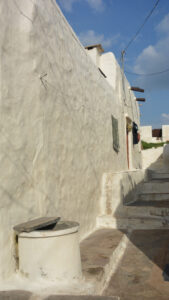 We visited the archaeological museum on the way to Bhutnath Temple. The place has an amazing display of artifacts through which we could appreciate the history of Indian culture in terms of symbolism, art, architecture, language, and worship. It was a revelation to see the goddess of fertility and other deities, demonstrating the diversity of thought, ritual, and faith in India.
We visited the archaeological museum on the way to Bhutnath Temple. The place has an amazing display of artifacts through which we could appreciate the history of Indian culture in terms of symbolism, art, architecture, language, and worship. It was a revelation to see the goddess of fertility and other deities, demonstrating the diversity of thought, ritual, and faith in India.
The journey till now was of a spiritual and cultural connection. As we reached Bhutnath, the day became truly beautiful. The temple edges the lake, with water reflecting it and its surroundings. The temple, silent with only the sound of the still water and no longer active for regular worship, resonated with spiritual energy.
Surrounded by an open platform and a pavilion facing the lake, the temple provides comfort even when crowded. The place was teeming with visitors, as it seems to be quite popular with the locals.
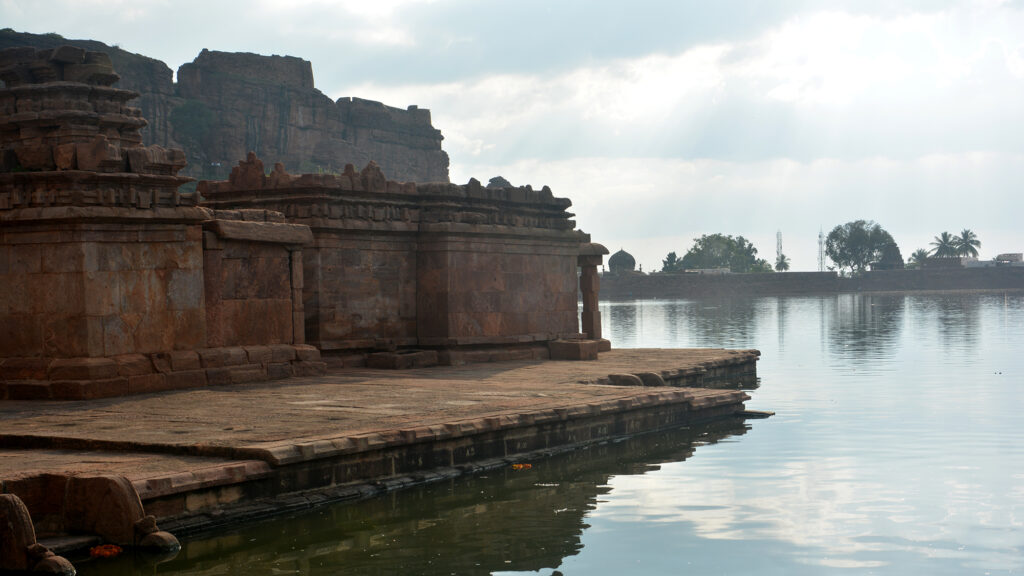 The evening progressed, transforming the place into an ethereal space with light playing both with the architecture and the water. This was, of course, enhanced by clouds and rain, making for a perfect setting. The interplay of light and shadow, coupled with the gentle ripples of the lake, created a mesmerizing spectacle.
The evening progressed, transforming the place into an ethereal space with light playing both with the architecture and the water. This was, of course, enhanced by clouds and rain, making for a perfect setting. The interplay of light and shadow, coupled with the gentle ripples of the lake, created a mesmerizing spectacle.
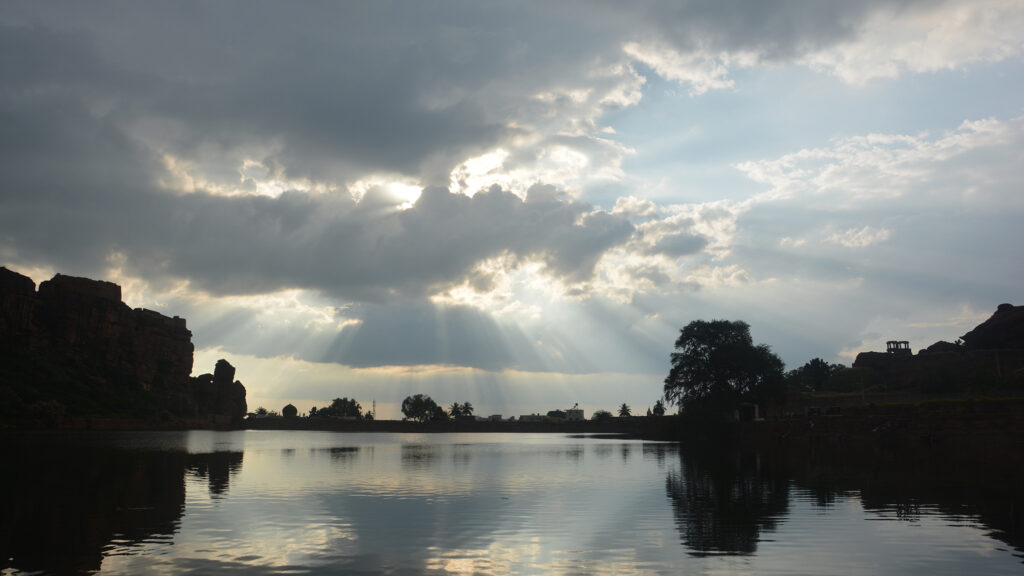 The stone pavilion, open to the elements, seemed to breathe with the changing light, while the serene waters mirrored the evolving hues of the sky. As the day transitioned to dusk, the temple’s serene ambiance deepened, offering a sanctuary of tranquility amidst the natural beauty.
The stone pavilion, open to the elements, seemed to breathe with the changing light, while the serene waters mirrored the evolving hues of the sky. As the day transitioned to dusk, the temple’s serene ambiance deepened, offering a sanctuary of tranquility amidst the natural beauty.
The majestic caves, tranquil Agastya Lake, beautiful residential quarters, and the ancient Bhutnath Temple, all woven together, created an unforgettable tapestry of history, spirituality, and culture.
You can find more about how, what and when to visit Badami here
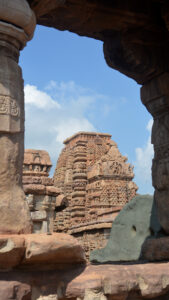 The visit to Badami oriented us to the next day’s visit to Pattadakal and Aihole. All these temples, built between the 4th and 7th centuries A.D., demonstrated the brilliance of the ancients, the vigor, and curiosity to experiment. Achieving perfection was visible as we visited one temple after another. Prominent among them were the Lad Khan temple with its two-storied structure and Durga temple with its circular circumambulatory path.
The visit to Badami oriented us to the next day’s visit to Pattadakal and Aihole. All these temples, built between the 4th and 7th centuries A.D., demonstrated the brilliance of the ancients, the vigor, and curiosity to experiment. Achieving perfection was visible as we visited one temple after another. Prominent among them were the Lad Khan temple with its two-storied structure and Durga temple with its circular circumambulatory path.
At Pattadakal, you can see the perfection each temple has tried to achieve through their setting, form, space, and scale. As you move in and around the temples, you are treated to a brilliant play of darkness and light.
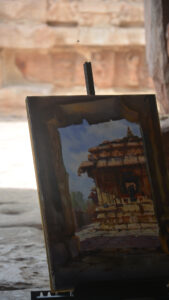 The area attracts numerous artists from across the country who come to capture the beauty of these temples in their art. During our visit, we met one such group from Mumbai. It’s no surprise that, even after 15 centuries, this place continues to inspire and remain relevant.
The area attracts numerous artists from across the country who come to capture the beauty of these temples in their art. During our visit, we met one such group from Mumbai. It’s no surprise that, even after 15 centuries, this place continues to inspire and remain relevant.
What amazed me most was the extensive stories carved intricately on the walls and columns from the Ramayana and Mahabharata. These carvings tell the events from these epics beautifully, conveying the depth of reach these stories had and still have in the subcontinent. These were living testimonies of the fact that it is these stories that unite us from North to South as a civilization.
The entire visit of two days became a learning curve in appreciating our own civilization—ancient in its wisdom, genius in its execution, diverse in its practice, and united by the stories in both geography and timeline.

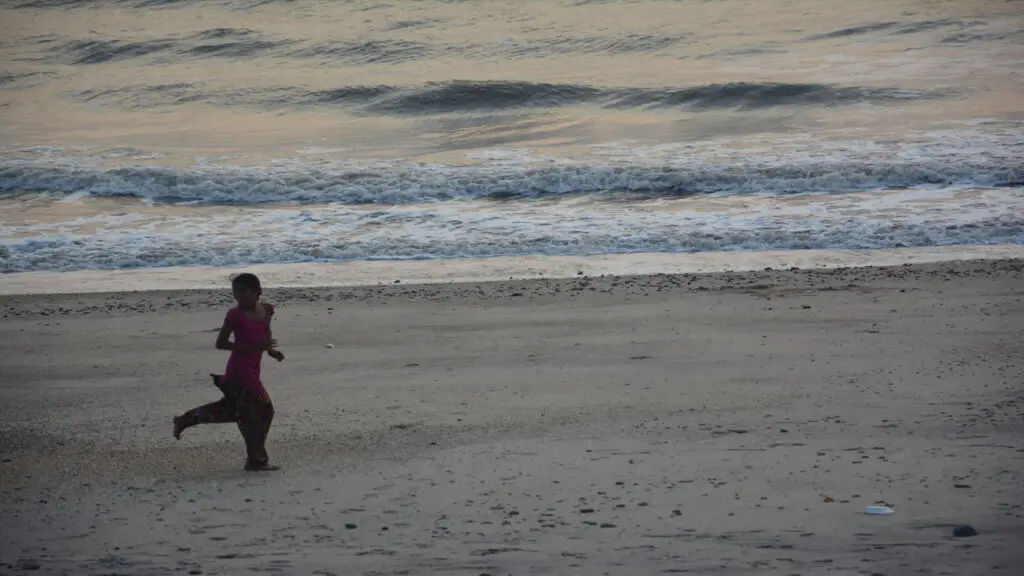
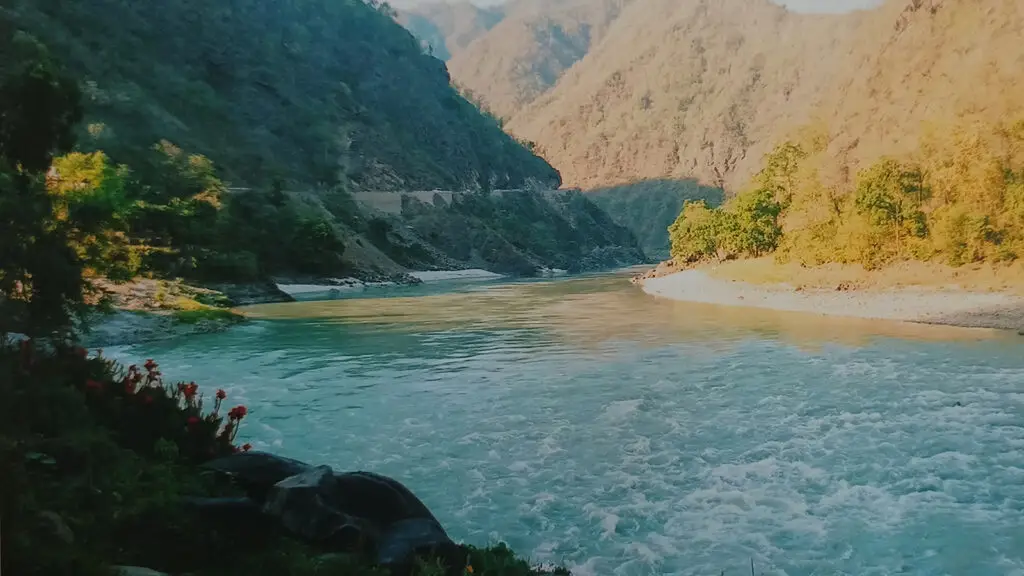
Beautifully described and pictured. It has been a while since I read your travel blog. Wonderful memories and history re-cap!
Thanks Nikhil for your kind words. Do check other blogs too